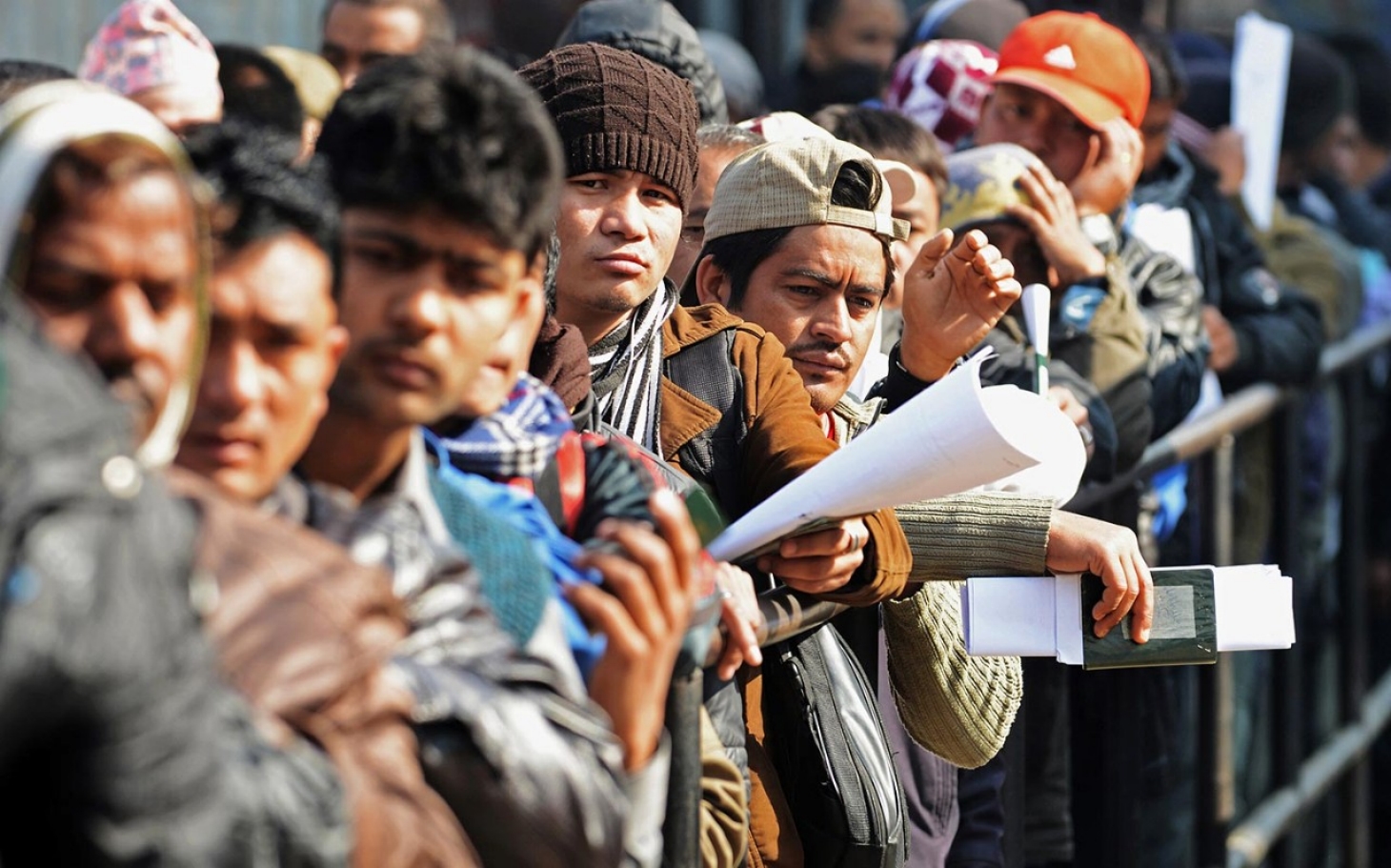Is Nepal poor country ? why they migrate to foreign for earn?

Migration for foreign employment has become a major source of income for a many Nepali households. A recent report - Labour Migration for Employment: A Status Report for Nepal 2013/14 shows that the number of migrants leaving Nepal for work is increasing every year. During the last fiscal year 2014, more than 520,000 labour permits were issued to Nepalis planning to work abroad. Malaysia is now the number one destination country for Nepali migrants, closely followed by Qatar, Saudi Arabia, UAE and Kuwait. The same report concluded that overseas employment is heavily male dominated: roughly 95 per cent of all labour permits are given to men. However, other data that captures those working in India (where labour permits are not required) or those leaving to work abroad through informal channels indicate that female migration might be as high as 12 per cent of the total workforce abroad.
Remittances have become a major contributing factor to increasing household income as well as to the national GDP. In 2013, remittance inflows topped US$5 billion, or 25 per cent of the national GDP. This placed Nepal third among the countries receiving the highest proportion of remittances in terms of GDP.
Nepali migrant workers make an enormous development contribution to their home country but also to the destination countries where they fill labour market niches by doing jobs that nationals are unable or unwilling to fill. But their contributions does not lessen their vulnerability to labour exploitation and abuse .Studies of recruitment processes and working conditions for low-skilled migrants consistently reveal indicators of abuse commonly associated with exploitation including forced labour and trafficking.
The ILO is the only United Nations agency with a constitutional mandate to protect migrant workers, and it does so as part of its overarching goal of achieving decent work for all. In addition to adopting International Labour Standards covering a wide range of employment-related areas (which apply to all persons in their working environment irrespective of their nationality), it has pioneered specific international Conventions to guide migration policy and the protection of migrant workers. This includes the Migration for Employment Convention (Revised), 1949 (No. 97) and the Migrant Workers (Supplementary Provisions) Convention, 1975 (No. 143) . All four sections of the ILO – standards, employment, social protection and social dialogue – work on labour migration. The ILO also promotes tripartite participation, the involvement of governments, employers and workers, in the formulation and implementation of migration policies and programmes.
In Nepal, the ILO is working with the Ministry of Labour and Employment, trade union and employers’ bodies, research institutions and civil society organizations to improve the overall governance of labour migration, to combat trafficking and to ensure protection and decent employment conditions to Nepali migrant workers during all stages of their migration cycle.
Hi! I am a robot. I just upvoted you! I found similar content that readers might be interested in:
http://www.ilo.org/kathmandu/areasofwork/labour-migration/lang--en/index.htm